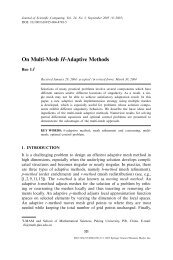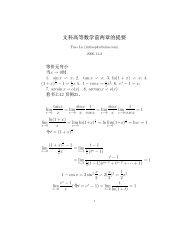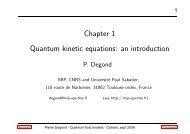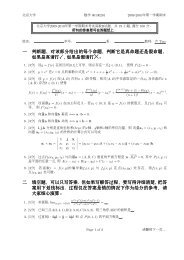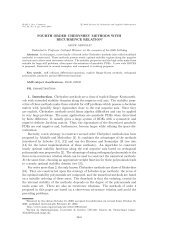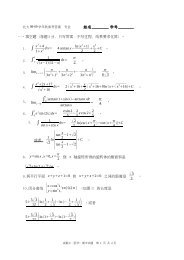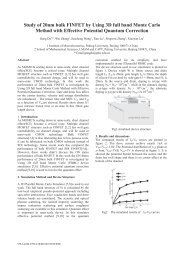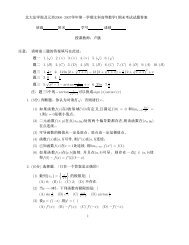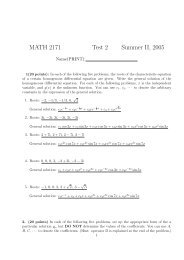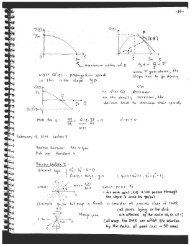Abstract
Abstract
Abstract
Create successful ePaper yourself
Turn your PDF publications into a flip-book with our unique Google optimized e-Paper software.
CHAPTER 2. TEMPORAL INTEGRATION 31<br />
The computations were performed on a Linux cluster of dual Xeon nodes with 2.8<br />
GHz Intel Xeon processors maintained by the High Peformance and Grid Computing<br />
group at North Carolina State University.<br />
Table 2.1: Sweep In Bias Timing<br />
Nx Nk ROCK4 VODEPK<br />
86 72 2hr10min 2hr17min<br />
128 128 13 hr 48 min 13 hr 45 min<br />
172 144 32 hr 23 min 29 hr 53 min<br />
We see that for the two coarsest grids, the integrators take about the same amount<br />
of time to finish the sweep in bias. At the finest grid, we see that VODEPK is<br />
slightly outperforming ROCK4. The grid Nx = 344, Nk = 288 was also tried, but<br />
after 3 days of computation, ROCK4 had only started on the eighth bias point while<br />
VODEPK had started on the ninth bias point. While this reinforces the idea that<br />
VODEPK can handle the finer grids better than ROCK4, it also emphasizes that<br />
using time-integration methods to understand the physics predicted by the Wigner-<br />
Poisson equations is too expensive. This motivates the alternative method of directly<br />
calculating steady-state solutions to the Wigner-Poisson equations, which is explained<br />
in Chapter 3.




